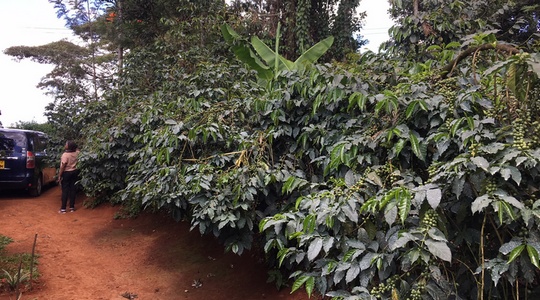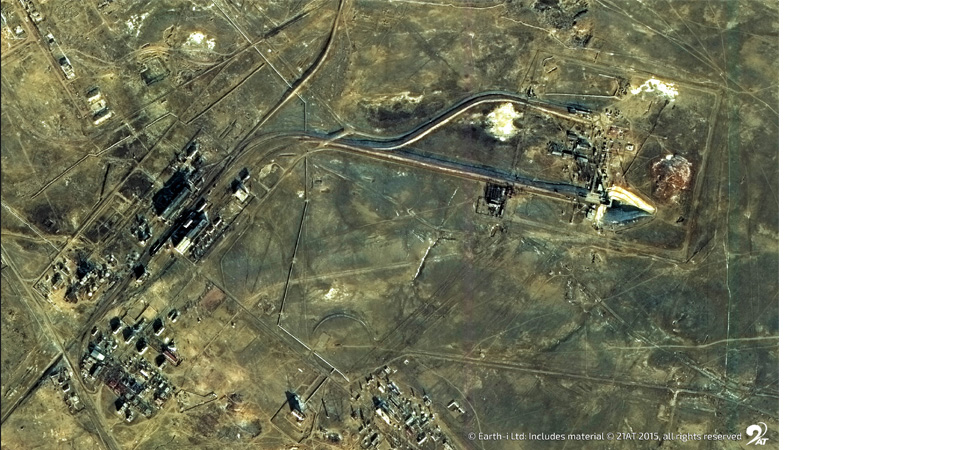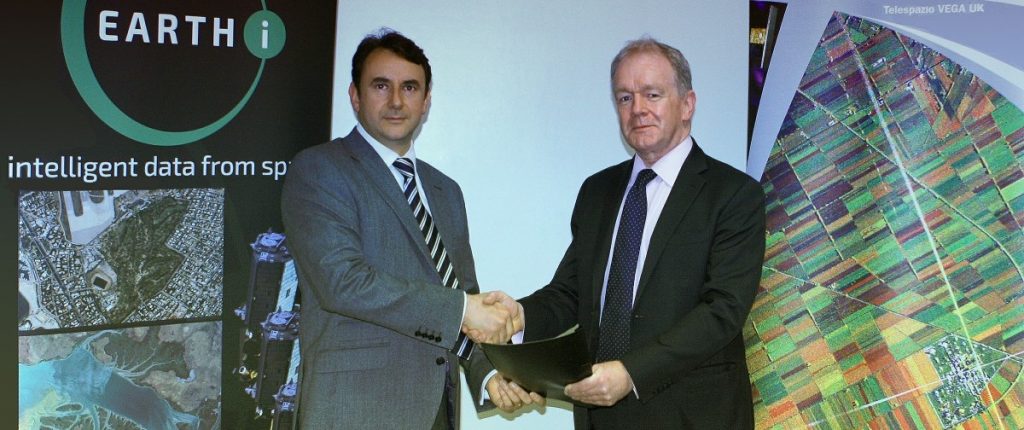By Jonathan Sumner, Business Development Director
Earth-i is a ‘New Space’ company at the forefront of the development and deployment of next-generation satellite technologies and the subsequent commercialisation of space bringing new benefits to a much wider range of businesses and government sectors.
These are indeed lofty ambitions. The inevitability of the excitement and (let’s admit it) a degree of romance around launching spacecraft, tends to lead our minds to the space adventure we have embarked upon. But it’s the application of space-based technology to problems, challenges and opportunities on the surface of our planet that actually make this adventure meaningful and worthwhile.
With this in mind, I was excited to make a trip to Kenya this month to meet with coffee farmers and agronomists to review progress with the implementation of our ACCORD programme. ACCORD provides farmers with access to timely, geo-targeted advice through a simple mobile application. Earth-i leads a consortium of UK and International partners, working with WeatherSafe Coffee Ltd (UK), Coffee Management Services Ltd (Kenya & Rwanda), Kinini Coffee (Rwanda) and San Francisco Bay Coffee Co (USA). The consortium employs a unique and proven method to combine satellite imagery and ground mapping observations, along with a custom localised weather forecast model, in a cost-effective manner. The programme is part-funded by the UK Space Agency and by the consortium members, to support socio-economic development goals in rural Africa.

The coffee industry faces some major challenges in sustaining the necessary rate of growth in the production of coffee to meet growing demand worldwide. Our appetite for coffee, particularly good quality coffee in all its permutations, seems to be an ongoing trend with no reverse gear. Despite all the marketing coffee chains have invested in, I suspect few of us consumers really appreciate where our Americanos and flat-whites come from, and especially who is growing the coffee.
The supply of coffee comes from a multitude of growing areas and countries in what is known as ‘the Bean Belt’. This is the area of the globe between the Tropics of Capricorn and Cancer where the climatic conditions and soil types are most suitable for the growing of coffee trees. East Africa is one of the important growing regions, especially as they focus on growing the Arabica variety of the coffee bean, to provide the flavour intensity and variety we so love in our high street coffee joints.
The coffee farmers of Kenya are a key source of Arabica coffee beans, and there are many thousands of them. Most are small-holder coffee farmers organised into cooperatives that ensure they can achieve some economies of scale and benefit from shared expertise and supply. This covers the supply of ‘inputs’ (fertilisers, fungicides and pesticides) and, critically, the advice of trained agronomists to advise the farmers when to apply these inputs.
The agronomists are the link between the science of modern agriculture and small-holder farmers, each growing coffee on typically just 0.5 hectares of land. Their advice and support to individual farmers makes a significant difference to achieving a good harvest for the farmer. They advise on when to fertilise, or when to apply fungicides or pesticides to combat the threat of disease or pests which can have a very negative impact on the harvest. Obviously, this requires in-depth knowledge of the coffee plant and growing conditions, and as many agronomists are or were coffee farmers themselves they offer a lot of expertise and support.
The problem is that climate change is now having a major impact on the outcomes of the coffee harvest. As the local weather conditions have become more unreliable and unpredictable, both the farmer, and the agronomist whose advice they rely on, are increasingly having to second-guess the impact of the weather. Temperature, humidity and rainfall are major causes of coffee tree vulnerability to disease and pests. There is often a very small window of opportunity to intervene with fungicides or pesticides to avert the threat of disease or pests. The timeliness of the interventions, often on the basis of advice from the agronomist with whom the farmer works, is a crucial factor in the success of the harvest. And with the impact of climate change, this has become a whole lot harder. The farmer has to make several such critical interventions each year.
The goal of the ACCORD programme is to tackle this problem through a combination of satellite and micro-climate data over the farming areas and cooperatives we are working with in Kenya and Rwanda. We first map the farms against satellite imagery, and then integrate micro-climate monitoring through our programme partners Weathersafe. This delivers weather forecasting of very high accuracy down to the individual farmer and coffee field level. Through SMS alerts to a mobile phone, farmers and agronomists receive the accurate and timely advice that they need to intervene with fertilisers, fungicides and pesticides, catching those crucial windows of opportunity to maximise their harvest. In addition, the use of NDVI analysis from satellite data, assesses crop health by measuring plant stress and leaf nitrogen levels, which when combined with information from the weather models prompts advisory alerts to the agronomists and farmers.
The agronomists we visited in Kenya work for our partner in the ACCORD programme, Coffee Management Services (CMS). The visit was an excellent opportunity to hear first hand their views on the programme and its promise, and how the implementation of the programme technology, literally ‘in the field’ was going. We also visited some farms to observe the ease at which agronomists can map a field of coffee to set it up in the system, using their mobile device. The process typically takes less than twenty minutes.
Which takes me back to where I started. This is the application of space on the ground. Satellite data provides the foundation for the application of climate monitoring and human expertise in combination to provide an optimal result. It reminded me that however ‘romantic’ the launch of our spacecraft into orbit around the Earth, the application of the Earth Observation imagery they generate, is what we can see and experience for ourselves, down here on the ground in a field in Embu County, Kenya, helping to improve crop yield and coffee quality.
And that’s something exciting you can think about and romanticise when you next sit down with your particular favourite coffee fad. Your double-shot, long macchiato might now be partly made in space!
If you wish to discuss this blog with Jonathan, please email: enquiries@earthi.space.co.uk
Earth Observation specialist brings over 25 years technology and applications experience to company offering daily high-resolution imaging and data…







